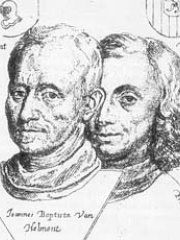
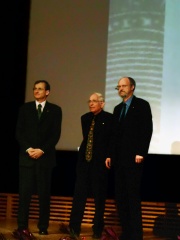
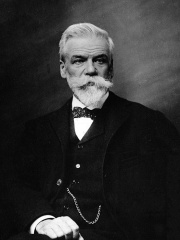
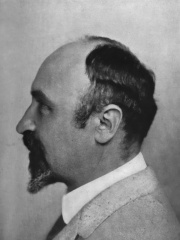
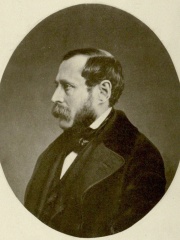

The Most Famous
CHEMISTS from Belgium
Top 7
The following people are considered by Pantheon to be the most legendary Belgian Chemists of all time. This list of famous Belgian Chemists is sorted by HPI (Historical Popularity Index), a metric that aggregates information on a biography's online popularity.

1. Jan Baptist van Helmont (1580 - 1644)
With an HPI of 74.70, Jan Baptist van Helmont is the most famous Belgian Chemist. His biography has been translated into 44 different languages on wikipedia.
Jan Baptist van Helmont ( HEL-mont, Dutch: [ˈjɑm bɑpˈtɪst fɑn ˈɦɛlmɔnt]; 12 January 1580 – 30 December 1644) was a chemist, physiologist, and physician from Brussels. He worked during the years just after Paracelsus and the rise of iatrochemistry, and is sometimes considered to be "the founder of pneumatic chemistry". Van Helmont is remembered today largely for his 5-year willow tree experiment, his introduction of the word "gas" (from the Greek word chaos) into the vocabulary of science, and his ideas on spontaneous generation.

2. Yves Chauvin (1930 - 2015)
With an HPI of 73.35, Yves Chauvin is the 2nd most famous Belgian Chemist. His biography has been translated into 59 different languages.
Yves Chauvin (French: [iv ʃovɛ̃]; 10 October 1930 – 27 January 2015) was a French chemist and Nobel Prize laureate. He was honorary research director at the Institut français du pétrole and a member of the French Academy of Sciences. He was known for his work for deciphering the process of olefin metathesis for which he was awarded the 2005 Nobel Prize in Chemistry along with Robert H. Grubbs and Richard R. Schrock.

3. Ernest Solvay (1838 - 1922)
With an HPI of 70.63, Ernest Solvay is the 3rd most famous Belgian Chemist. His biography has been translated into 38 different languages.
Ernest Gaston Joseph Solvay (French: [sɔlvɛ]; 16 April 1838 – 26 May 1922) was a Belgian chemist, industrialist and philanthropist.

4. Leo Baekeland (1863 - 1944)
With an HPI of 68.90, Leo Baekeland is the 4th most famous Belgian Chemist. His biography has been translated into 52 different languages.
Leo Hendrik Baekeland ( BAYK-land, Dutch: [ˈleːjoː ˈɦɛndrɪɡ ˈbaːkəlɑnt]; November 14, 1863 – February 23, 1944) was a Belgian chemist. Educated in Belgium and Germany, he spent most of his career in the United States. He is best known for the inventions of Velox photographic paper in 1893, and Bakelite in 1907. He has been called "The Father of the Plastics Industry" for his invention of Bakelite, an inexpensive, non-flammable and versatile plastic, which marked the beginning of the modern plastics industry.
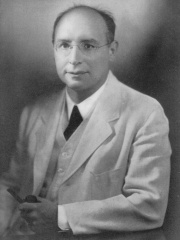
5. George Sarton (1884 - 1956)
With an HPI of 61.01, George Sarton is the 5th most famous Belgian Chemist. His biography has been translated into 17 different languages.
George Alfred Leon Sarton (; 31 August 1884 – 22 March 1956) was a Belgian-American chemist and historian. He is considered the founder of the discipline of the history of science as an independent field of study. His most influential works were the Introduction to the History of Science, which consists of three volumes and 4,296 pages, and the journal Isis. Sarton ultimately aimed to achieve an integrated philosophy of science that provided a connection between the sciences and the humanities, which he referred to as "the new humanism".

6. Jean Stas (1813 - 1891)
With an HPI of 60.33, Jean Stas is the 6th most famous Belgian Chemist. His biography has been translated into 21 different languages.
Jean Servais Stas (21 August 1813 – 13 December 1891) was a Belgian analytical chemist who accurately measured the atomic weight of carbon.

7. Gilbert Stork (1921 - 2017)
With an HPI of 51.94, Gilbert Stork is the 7th most famous Belgian Chemist. His biography has been translated into 16 different languages.
Gilbert Stork (December 31, 1921 – October 21, 2017) was a Belgian-American organic chemist. For a quarter of a century he was the Eugene Higgins Professor of Chemistry Emeritus at Columbia University. He is known for making significant contributions to the total synthesis of natural products, including a lifelong fascination with the synthesis of quinine. In so doing he also made a number of contributions to mechanistic understanding of reactions, and performed pioneering work on enamine chemistry, leading to development of the Stork enamine alkylation. It is believed he was responsible for the first planned stereocontrolled synthesis as well as the first natural product to be synthesised with high stereoselectivity. Stork was also an accomplished mentor of young chemists and many of his students have gone on to make significant contributions in their own right.
People
Pantheon has 7 people classified as Belgian chemists born between 1580 and 1930. Of these 7, none of them are still alive today. The most famous deceased Belgian chemists include Jan Baptist van Helmont, Yves Chauvin, and Ernest Solvay.
Deceased Belgian Chemists
Go to all RankingsJan Baptist van Helmont
1580 - 1644
HPI: 74.70
Yves Chauvin
1930 - 2015
HPI: 73.35
Ernest Solvay
1838 - 1922
HPI: 70.63
Leo Baekeland
1863 - 1944
HPI: 68.90
George Sarton
1884 - 1956
HPI: 61.01
Jean Stas
1813 - 1891
HPI: 60.33
Gilbert Stork
1921 - 2017
HPI: 51.94
Overlapping Lives
Which Chemists were alive at the same time? This visualization shows the lifespans of the 6 most globally memorable Chemists since 1700.

